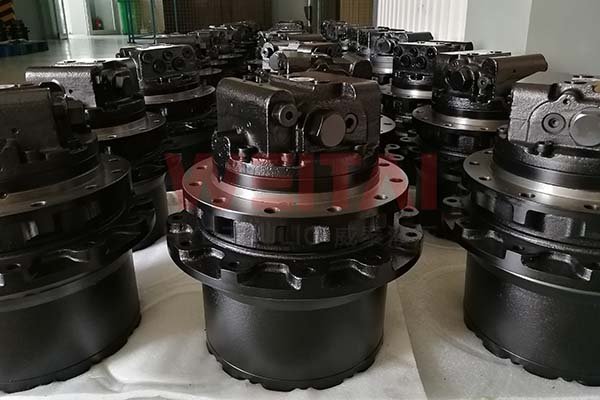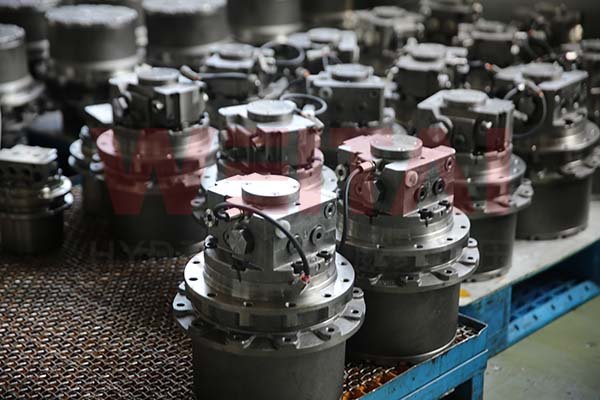When it comes to powering machinery, the decision between using a hydraulic wheel motor and other options is an important one. Here’s a closer look at the comparisons and what factors to consider when making a choice.

Power and Torque
Advantages of Hydraulic Wheel Motor
Hydraulic wheel motors are renowned for their high torque capabilities. They can generate significant force at relatively low speeds, making them ideal for heavy-duty applications that require a lot of pushing or pulling power. For example, in a large industrial forklift used to lift and transport heavy pallets, the hydraulic motor can effortlessly handle the weight and provide the necessary torque to start, stop, and maneuver. In contrast, electric motors may struggle to provide the same level of torque without complex gearing systems, which can add cost and complexity.
Electric Alternatives
Electric wheel motors have been growing in popularity, especially in some light-duty applications. They offer precise control and can be very efficient in the right conditions. However, their torque output at lower speeds may not be as high as hydraulic motors. For applications where continuous high torque is needed, such as towing heavy loads up a steep incline, a hydraulic motor may be a better choice. But for tasks that require less brute force and more speed regulation, like in some automated guided vehicles in a factory setting, electric motors can shine.
Environmental Considerations
Challenges of Hydraulic Wheel Motor
Hydraulic systems, including wheel motors, can have an impact on the environment. The hydraulic fluid can leak, which can cause soil and water contamination if not properly managed. Additionally, the energy efficiency of some hydraulic systems can be relatively low compared to electric options. However, new technologies and improved maintenance practices are helping to reduce these issues. For example, biodegradable hydraulic fluids are now available, and better sealing mechanisms are being developed to prevent leaks.
Electric Benefits
Electric wheel motors produce zero direct emissions at the point of use, which is a major advantage for applications where environmental regulations are strict. They are quieter in operation, which can be beneficial in urban or indoor environments. But the production of electricity and the disposal of batteries can have environmental implications of their own. Also, in extremely cold or hot conditions, battery performance can be affected, potentially limiting the effectiveness of electric motors.
Cost and Maintenance
Costs of Hydraulic Wheel Motor
The initial cost of a hydraulic wheel motor system can vary. Basic systems may be relatively affordable, but when you factor in the cost of a hydraulic pump, hoses, valves, and the necessary fluid, the overall expense can add up. However, hydraulic systems are known for their durability and can last a long time with proper maintenance. Maintenance often requires trained technicians who are familiar with hydraulic systems. Fluid changes, seal replacements, and inspections are necessary to keep the system running smoothly.
Electric Considerations
Electric wheel motors can have a higher initial cost, especially when you consider the cost of high-quality batteries and associated charging infrastructure. But they generally have fewer moving parts, which can lead to lower maintenance costs over time. Regular inspections of wiring, connectors, and motor brushes are important. Battery replacement can be a significant expense, but improvements in battery technology are gradually reducing costs and increasing lifespan.
Applications of Hydraulic Wheel Motor
The hydraulic wheel motor has proven to be an invaluable asset across a wide spectrum of industries, powering a diverse array of machinery and vehicles with its unique capabilities.
Construction Industry
In the construction realm, hydraulic wheel motors are the workhorses that drive heavy equipment. Bulldozers, for instance, rely on these motors to move across rough terrains with ease. The high torque output of the motors allows the bulldozer blades to push large amounts of earth, debris, and other materials. Cranes also use hydraulic wheel motors to position themselves accurately on job sites. They enable smooth movement, even when carrying heavy loads, and can handle the stress of constant starts and stops. Forklifts, another staple in construction, benefit from the precise control that hydraulic wheel motors offer. They can lift and transport building materials with efficiency, navigating tight spaces in warehouses and construction zones.
Agriculture
On the farm, tractors and other agricultural machinery depend on hydraulic wheel motors. Tractors use them for field operations such as plowing, seeding, and harvesting. The motors’ ability to provide consistent power and adapt to different soil conditions is crucial. They can handle the uneven surfaces of fields and muddy terrains, ensuring that the work gets done without interruption. Combine harvesters, with their complex movements and need for power, rely on hydraulic wheel motors to move through crops and process the harvest.
Mining
In the harsh environment of mines, hydraulic wheel motors are essential. Mining trucks, some of the largest vehicles in operation, use these motors to haul ore and minerals from deep within the earth to the surface. The motors can withstand the extreme weights and rugged terrains found in mines. They also provide the necessary power to climb steep inclines and navigate through narrow passageways. Additionally, drilling equipment utilizes hydraulic wheel motors for positioning and movement, enabling accurate drilling operations in search of valuable resources.
Material Handling
In industrial warehouses and ports, hydraulic wheel motors are found in a variety of material handling equipment. Stackers, reach trucks, and conveyor systems all benefit from their power and control. They ensure that goods are moved and stored safely and efficiently. The motors can handle the heavy loads of palletized goods and provide the maneuverability needed to stack and retrieve items in confined spaces.
In conclusion
The choice between a hydraulic wheel motor and other options depends on a variety of factors such as the power requirements, environmental constraints, budget, and maintenance capabilities of the user. By carefully evaluating these aspects, one can make an informed decision that best suits their specific application. Whether it’s the tried-and-true power of hydraulics or the clean and precise operation of electricity, each has its place in the world of motorized machinery.



